"Radiation and Postwar Anime and Tokusatsu Culture" by Ryūsuke Hikawa
An extract from the catalogue of Takashi Murakami’s exhibition Under the Radiation Falls published by Garage Museum of Contemporary Art.
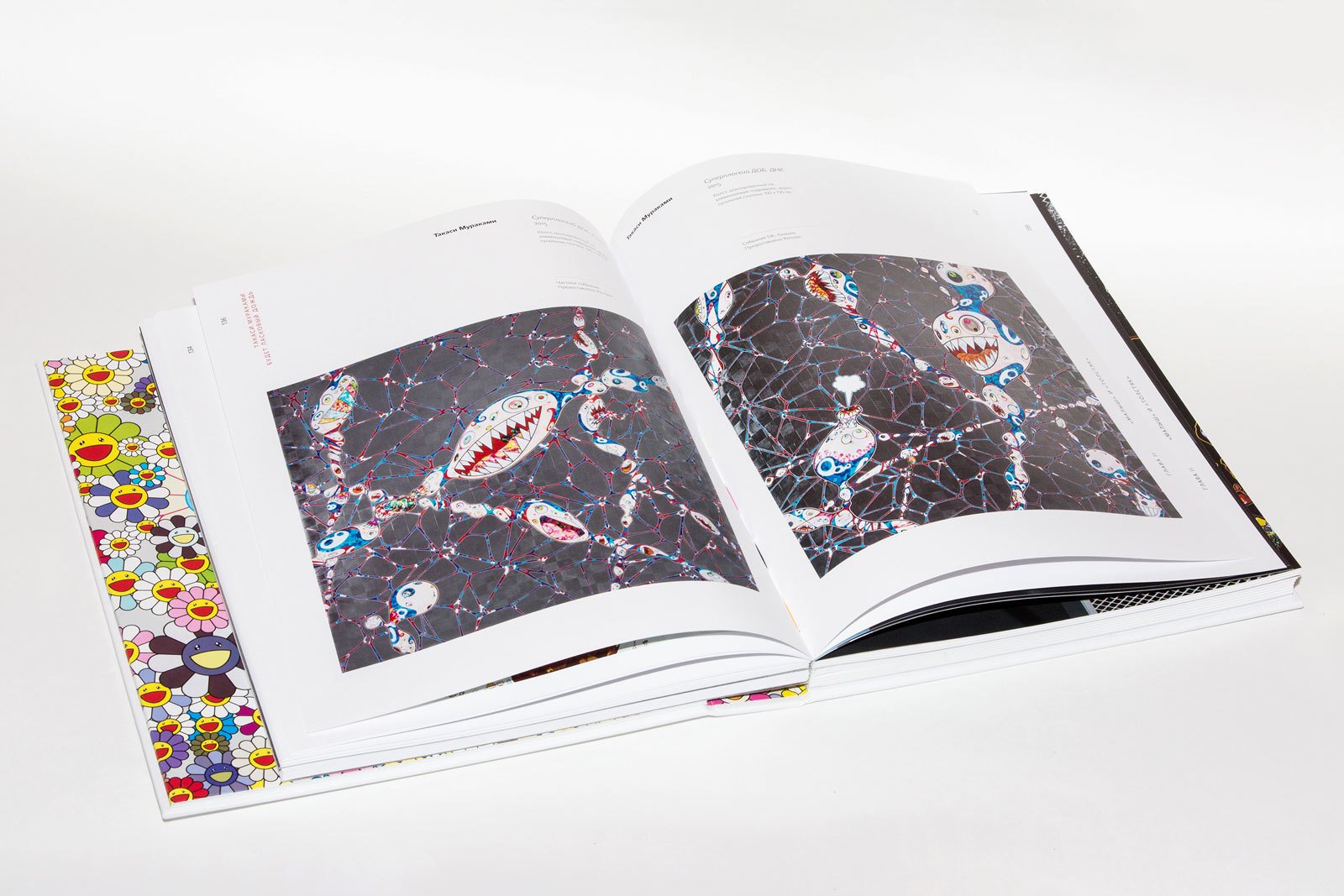
It is quite clear that anime culture reflects not only and not so much the defeat of Japan in World War II and the bombing of Hiroshima and Nagasaki as it does the country’s reconstruction period. The widespread belief that anime was shaped exclusively by these events, however, is not entirely accurate. I have seen a lot of anime and tokasatsu1, and I cannot say that the images in these films are obvious metaphors of atomic weapons. (Today I am speaking as a representative of the first generation of televised anime viewers: I was born in 1958, and I was about five years old when they began showing the Mighty Atom anime on television.)
Nineteen sixty-four, a year after the first Mighty Atom series aired, marks the advent of rapid economic development in Japan: the Shinkansen high-speed rail service began operation, the expressway opened in the capital, and the Summer Olympics were held in Tokyo. Japan was expanding its scientific and technological capabilities with an eye to the future. Thus photographs of the bombings of Hiroshima and Nagasaki were viewed by us schoolchildren at the time as a by-product of the Cold War: nuclear weapons tests and the arms race seemed far more relevant than the memory of World War II. When I was in elementary school, the main testing ground was the Pacific Ocean, and our teachers would warn us (as though they had a monopoly on the truth): «Pay attention, rain can be dangerous. Precipitation is mixed with radioactive ash. Be careful, or your hair will fall out.»
My generation was the first to grow up on manga, anime and tokusatsu, and in retrospect today, I can identify four main trends or currents in the portrayal of the atomic threat in Japanese visual culture of the past fifty years.
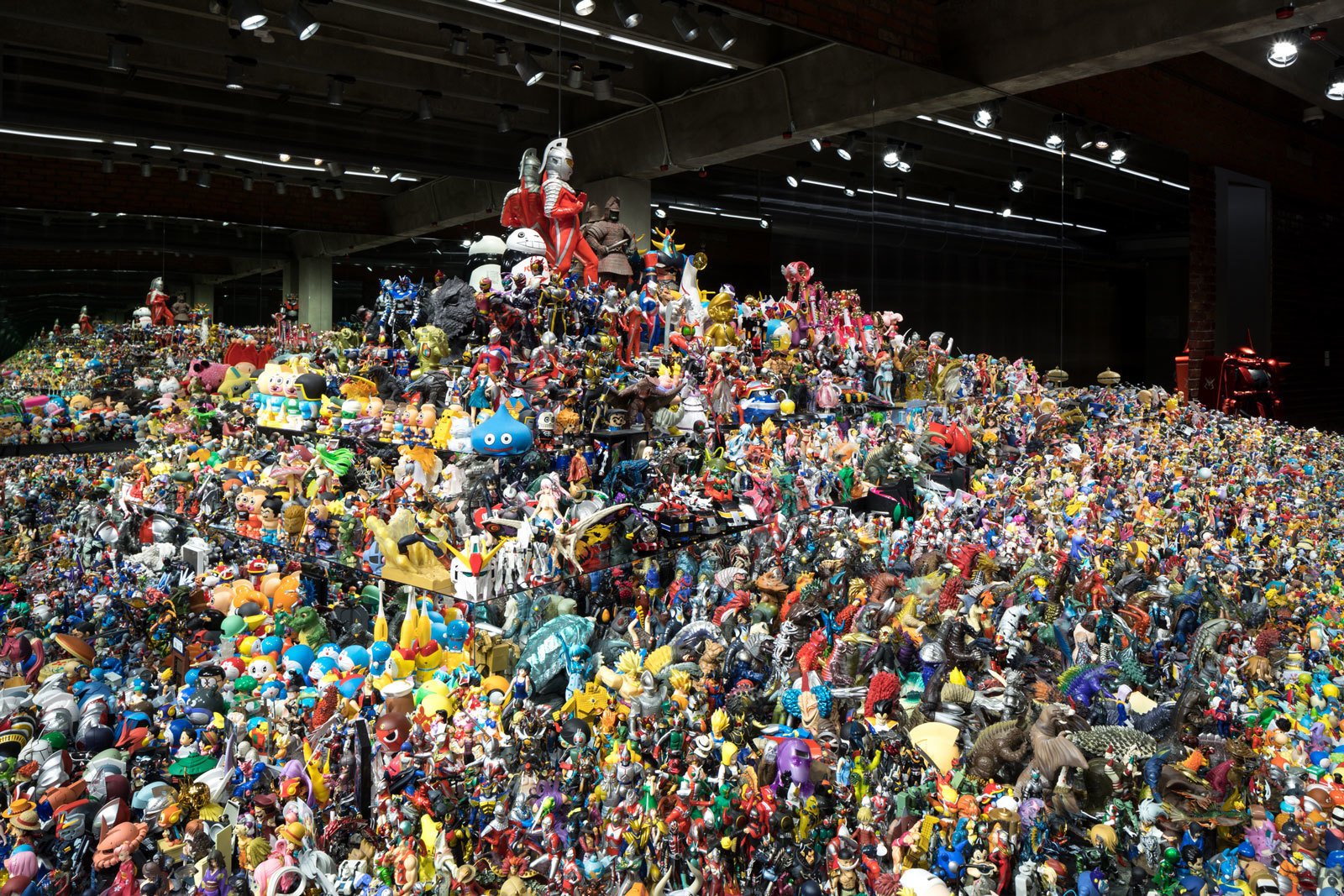
Under the Radiation Falls exhibition view, Moscow, 2017
Photo: Alexey Narodizkiy
© Garage Museum of Contemporary Art
The first current consists of films and cartoons that directly demonstrate the power of atomic weapons and the destruction they cause. Anime and tokusatsu are fictional, but their creators relied on documentary images. Particularly the anime Barefoot Gen and In this Corner of the World are inseparably connected with the bombing of Hiroshima.
Barefoot Gen (1983) shows people and buildings being instantly burned and destroyed at the epicenter of an atomic blast. Actually filming such things is impossible, but anime recreates events based on the accounts of survivors and news photographs, and the sense of being present in the scenes created by these horrific frames is more powerful than real portrayals. Scenes showing the eyes falling out of people as they die are uncut, but thanks to the «drawn» nature of the images we manage not to avert our eyes from the screen.
Appearing quite recently, in 2016, In this Corner of the World deals with the bombing of Hiroshima. The nuclear catastrophe is viewed by the inhabitants of a little town by the name of Kure some twenty kilometers from the epicenter of the explosion. This is the optimal range—not too far and not too close—a distance that serves more to trigger the imagination than to demonstrate the power of atomic weapons. This «trigger» device is used throughout the film. The camera does not focus on the epicenter of the blast. Attention is concentrated instead on the reactions of the people of Kure, highlighting only what «might be happening» or «facts that seem reliable»: «they say that the asphalt is melting in Hiroshima»; «a soldier who has traveled twenty kilometers from the site of the events dies from sheer exhaustion»; «people don’t notice anything,» etc. Generally speaking, the inhabitants of Kure are neither observers nor participants of the events, but this device only serves to intensify our perceptions.
I think that if super-realistic computer graphics could be used to show human bodies melting and vaporizing at the epicenter of the blast, no viewer would be able to stand the sight, and that what is transpiring on the screen—basically a reconstruction of genuine events—would be regarded as impossible. It is the conventional language of anime that brings the entire horror in Barefoot Gen to the viewer. As for In this Corner of the World, it is ultimately its reserve and the distance of the events that arouse very real fear in the face of the catastrophe.
In the second current, the «doom» caused by nuclear war is replaced with alternative theories of the end of the world. During the Cold War, the USA and the USSR acquired enough potential and mighty nuclear arsenals to allow them to destroy the Earth several times over. The theme of an all-inclusive nuclear confrontation leading to the annihilation of all humanity was repeatedly featured in magazines for children and adolescents and became the subject of feature films and manga. Even elementary school students during the age of the Japanese economic miracle were aware of it2.
The oil crisis and the belated awareness of the disastrous pollution of the environment that overtook society in the 1970s, however, changed Japanese visions of possible doomsday scenarios. In the 1960s Japan flourished thanks to manufactured goods trade and advanced technology, but war in the Middle East crippled oil imports, which led to unrest connected with the decreased availability and assortment of basic necessities. The frailty of a society based on a belief in science and progress became an increasingly frequent theme, and the ubiquitous discussion of the nuclear threat only intensified tensions.
In 1973 two books appeared which became best sellers and played a central role in this «end of the world boom.» The first, science fiction writer Sakyo Komatsu’s novel Death of the Dragon (translated literally, the title is Japan Sinks), came out at a time when witnesses of the Great Kanto Earthquake that completely destroyed Tokyo and Yokohama in 1923 were still alive. It describes dreadful natural disasters that plunge Japan under water. The second, Ben Goto’s non-fiction Great Predictions of Nostradamus, claimed that the prophecies of the sixteenth-century astrologer were accurate, although in fact the book contains more authorial interpretations than it does real facts. For example, Goto cites quatrain X-72—"The year 1999, seventh month/From the sky will come a great King of terror"3 —which is purported to predict the death of humanity. This fragment attracted a great deal of attention and made a deep impression on several generations of Japanese.
Nowhere, of course, does Nostradamus speak of nuclear war, but the more abstract a text, the more open it is to different interpretations. Many took this quatrain literally, saying «we will not survive 1999.» Armageddon, a term in the Christian vocabulary, became familiar to the Japanese through the anime Great War with the Genma (better known as Genma Taisen, 1983), whose plot is structured around the idea that the combined efforts of all paranormalists will enable the world to withstand the threat of worldwide destruction emanating from outer space. The notion of Armageddon also played an important role in the Aum Shinrikyo cult, whose adepts belonged to a generation interested in Nostradamus’s prophecies.
There are very few anime that depict nuclear war as such, however. One is the 1982 film Future War 198X, which shows a total nuclear massacre. Noriyoshi Orai, an artist of the so called realistic current in anime, created a huge imageboard dedicated to the gradual destruction of the world, but the executives of Toei Animation, which produced the film, later decided that such «trafficking in scenes of war» was inappropriate.
Generally speaking, the theme of nuclear war is not so very often treated in anime. Much more frequent is an approach used in televised works such as Space Battleship Yamato (1974), which takes place after an interplanetary attack that has reduced Earth to a scorched wasteland. The visuals of the film allude to images of a post-nuclear world, and these indirect references serve only to intensify its feeling of reality.
In the anime The Super Dimension Fortress Macross (1982) a meteor colliding with Earth in June 1999 turns out to be the spaceship Macross, which had been involved in a millennia-long battle of the universe. The earthlings begin to study the ship in order to prepare a meeting with its masters. The arriving aliens, however, are not the real owners of the craft, but their ancient enemies, the giant Zentradi. Macross reacts to the danger by firing its main cannon, thereby igniting a war between the aliens and the inhabitants of Earth. At the center of the plot, therefore, is not a nuclear weapon of limited power, but a much mightier image of civilizational struggle.
The third current focuses on the theme of total atomic war, particularly its results and the possibility of life in a post-nuclear world. One of the most typical representatives of this trend is the anime series Fist of the North Star (1984-1987), which is set after «the world was engulfed in nuclear flames.» The theme of nuclear war, however, is not primary, and radioactive pollution is not even mentioned. This anime is closest in nature to Mad Max 2 (1981), with a plot structured around conflicts among the survivors. Thus the hero Kenshiro and his companions in arms battle bands of cutthroats. Such a conflict is possible only in a «wild» world in which all social institutions and regulatory mechanisms have been destroyed. In this respect Fist of the North Star is canonical within anime culture, for it shows a world located «somewhere, but not here.»
The fourth anime trend is dedicated to the so called side effects of nuclear war. Akira (1988), based on the manga of the same name, opens with an explosion of indeterminate origin that wipes Tokyo from the face of the Earth and (echoing The Super Dimension Fortress Macross) triggers World War III. Akira, however, is not about a conflict of civilizations, for as the plot develops, the energy that destroys millions of people is also shown to be capable of liberating latent human capabilities.
At first glance, Ghost in the Shell seems to center on the activities of cyborg special agents (some of whom have participated in various military conflicts), but as the plot progresses the focus shifts to changes in human consciousness caused by universal cyborgization and, more narrowly, by the development of information technology. Here the internet is portrayed not so much as a by-product of war as a phenomenon that defines reality.
Yet another example is Evangelion. In 1999 (once again a date from Nostradamus’s prophecies!) in the Antarctic there is an enormous surge of energy dubbed the «Second Impact» which brings the planet to the brink of doom. What is this energy and what forces are responsible for these events? It comes to light that they are due to «behind-the-scenes» schemes and plots woven by the powerful of the world.
In all three of these anime, the position of the author is obvious: from war, even the most horrible, some benefit can be derived. This is a typical attitude of several postwar generations. In these films, however, there is another theme that is relevant to all ages, namely that all wars (and all disasters) transform humans and reveal previously hidden possibilities. And that how these possibilities are realized is up to us. The authors of these films raise the question of accountability and responsibility to future generations. For the future of our children is to a great extent in our own hands.
***
More often than not, the authors and viewers of anime had not witnessed atomic bombings or nuclear tests in the Pacific, but had only indirect knowledge of such events. For that reason, the visions of each individual played such an important role in depicting the catastrophes. It was imagination that generated serious fear and stimulated the feeling of being a witness that all viewers could experience as they looked at the screen.
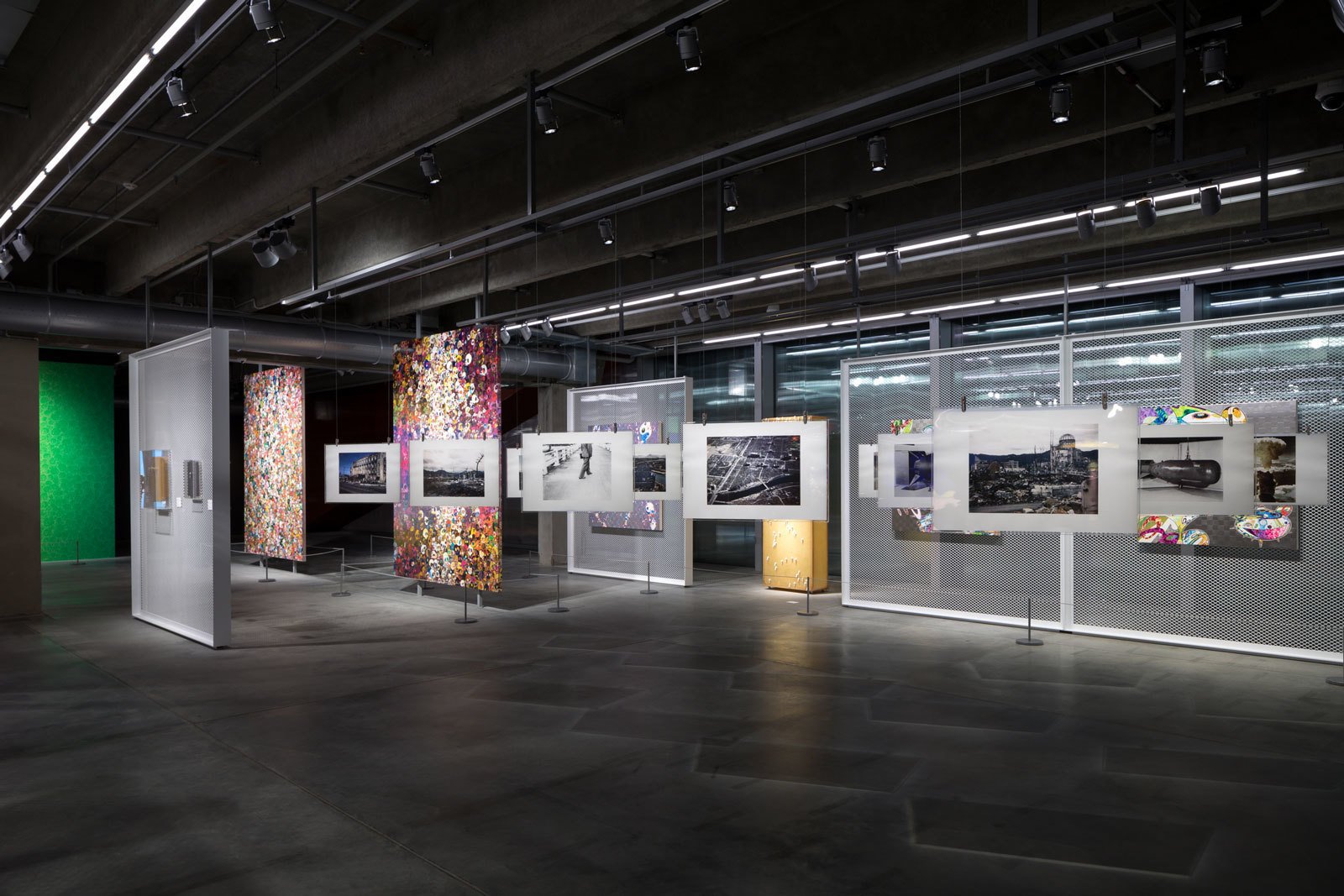
Under the Radiation Falls exhibition view, Moscow, 2017
Photo: Ivan Erofeev
© Garage Museum of Contemporary Art
I remember that as a child, on the eve of August 15, the anniversary of the end of the war, I watched television programs featuring the memories of eyewitnesses, and in school they showed documentaries about the bombings and read «Hibakusha»4 diaries. But we were told not only about Hiroshima and Nagasaki. The bombing of Tokyo5 was a no less horrific episode in Japanese history: the air strikes killed dozens, if not hundreds of thousands of people and crippled the lives of many others. Understandably, the survivors wanted to speak out and tell following generations so as to prevent war from ever being repeated. Unfortunately, we, the postwar generation, did not listen to these stories. We generally took a rather frivolous position, assuming that we had nothing to worry about—we were protected by the Pacifist Constitution, and there was simply no way war could happen6. This was a kind of defensive reaction. But gradually the defense weakened, our sense of security receded, and the visual culture so dear to us—above all anime—again and again argued that no one was immune to disaster. Discussions of Nostradamus’s prophecies based on the above-mentioned book by Ben Goto also contributed to a climate of gloom and even panic. We saw signs everywhere—we so very much wanted to know what was in store for us. And we were so afraid of it.
The events in the anime The Space Battleship Yamato, which appeared in the 1970s at the height of the unparalleled Nostradamus vogue, were set in 2199, 200 years after the predicted end of the world. According to the plot, one year remained until the death of humanity. But perhaps it could be saved?... Coexisting despair and hope—one of the principal emotional lines of the film—were typical of the Japanese in the 1970s-1990s. Right up until July 1999, when it became clear that Nostradamus’s prophecy would not come true, many lived in fear.
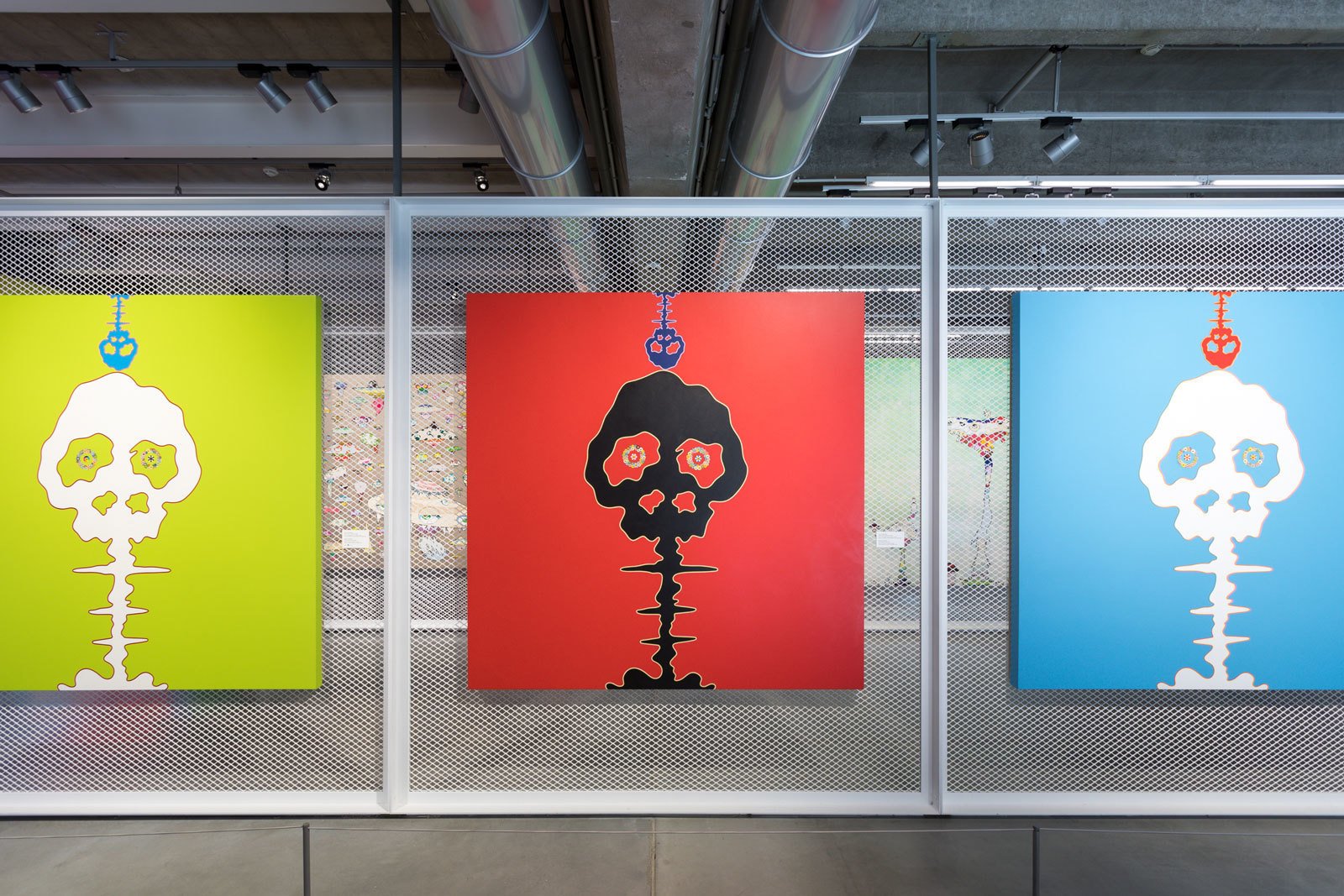
Under the Radiation Falls exhibition view, Moscow, 2017
Photo: Ivan Erofeev
© Garage Museum of Contemporary Art
The twenty-first century arrived, and it seemed that perhaps the end of the world had been canceled. But then, on September 11, 2001 a series of terrorist attacks were carried out in the United States. The mood changed: everyone—Japanese and Americans alike—realized that misfortunes and catastrophes could be supranational. And this awareness became the basis of a certain equality and even unity in which—and this is the paradox—it was possible to be happy. Happy in the face of inescapable calamity.
***
One more thing I’d like to touch upon in the present essay is interest in the occult, which is intimately linked to society’s preoccupation with ideas about the end of the world. Mu, a Japanese journal dedicated to the occult sciences, began publication in 1979, symbolically signaling an end to the reign of omnipotent science that had begun ten years earlier with the many scientific achievements featured at the Expo-70 World’s Fair in Osaka.
As was noted above, the 1960s were in Japan a time of active economic growth. Japanese science and technology in many respects outstripped the accomplishments of other countries. It was a period of one of the greatest shifts in the history of world economics. Japan invented, manufactured and sold transistor radios, compact automobiles, ferrous and nonferrous metal products, ships, etc. Most researchers, however, ignored the fact that underlying this success was a desire to get back at the world after her defeat in WWII. But as early as 1970 it became apparent that we had «tried a little too hard.» We made great strides in the chemical and food industries, pharmaceuticals, machine building, and electronics. From being shoddy products, Japanese goods became literally a symbol of quality. All this was thanks to the frenetic labor of the workers. Japanese anime followed the same path.
Nineteen sixty-four—the year of the Olympics in Tokyo—marked the climax of this «reckoning» with the rest of the world. It was in preparation for the Olympics that construction began on a network of expressways and the high-speed train line was opened. As it invested in infrastructure, Japan showed itself to the world from a new perspective—it «. . . was different. This was no longer the country that had launched a war.» Yet it was still impossible to escape the trauma caused by the war. This is evident in the manga The Mighty Atom (1952-1968) and Iron Man No. 28 (1956-1966). The plot of the latter is simple, consisting in the story of a humanoid soldier robot in peacetime. The «atom» in the title The Mighty Atom is of course nuclear energy, which can be made into a bomb but can also be transformed into harnessed energy, i.e. the «peaceful atom.» In other words, it is the story of diverting the energy of war into a peaceful channel. In turn, the atomic and hydrogen bombs in the film Godzilla (1954) become «monsters,» and the natural world «strikes back.» Naturally coexisting in humankind are both a good and rational and an evil, destructive spirit, and if the latter gets out of control, Nature (or the gods) take their revenge. Note that this approach is also characteristic of Shintoism, the most important religion in Japan.
***
Among the national and specialized pavilions at Expo-70 (including The Power Industry, Gas, Telecommunications and others devoted to Japan’s new infrastructure which essentially demonstrated to the world Japanese scientific potential), a number of leading Japanese companies were represented, including Hitachi, Mitsubishi, Toshiba, IHI, Matsushita, Sanyo, Furukawa, and Riko.
The Pavilion of Future by Mitsubishi was noteworthy. Wide-screen films directed by «god of special effects» Eiji Tsuburaya were integrated into the exposition to show how Japanese science was transforming the future. One of them was dedicated to «neutralizing the energy of a typhoon by means of an atomic bomb.» That is, it demonstrated that science could and should control natural disasters and cataclysms. It should be observed that many of Tsuburaya’s filming techniques (for example, using gas to simulate a typhoon) were also the result of new technologies.
The rise in motorized transport and the resultant environmental pollution reached its climax on the eve of Expo-70, by which time it had become a serious social problem. The dynamic growth in all branches of industry attracted the attention of environmentalists, who for the first time publicly pointed to the damage being done by technological progress. At the same time, the student movement was activated and protests arose against, among other things, the renewal of the Treaty of Mutual Cooperation and Security between the United States and Japan.
Typical of the anime of those years was the image of melting humans. Thus in the Masked Rider series (beginning in 1971) there are many scenes in which a monster douses people with a dissolving liquid. In the same year, the monster Hedorah, spawned in an ocean poisoned by toxic waste, becomes Godzilla’s adversary. Godzilla is the result of radioactive pollution, but now there is a feeling that «peaceful» environmental pollution is worse than any atomic bomb. Indeed, the inalienable right to air and potable water was at risk due not to a nuclear blast, but rather to expanding industrial capabilities, and this fear found expression in visual culture. Directors and animators refused to work in physics, chemistry and other sciences and instead made «scientific discoveries» on the screen as they investigated nothing less than the human soul.
For episode 27 of the TV anime The Super Dimension Fortress Macross, the twenty-two-year-old animator Hideaki Anno created many scenes based on documentary films of nuclear tests. The viewer sees the initial destruction caused by neutron radiation, which is followed by a hot wind that sweeps away the remains of the buildings. The difference in temperature between hot and cold air changes the direction of the wind, and now the debris flies in the opposite direction. And then we see the mushroom cloud, an image that will become iconic for many anime... Everything is shown in minute detail—changes in the physics of various natural phenomena, differences in the destruction of wooden and metal structures... And we believe the drawn picture. Contributing to the realism of what we have seen is the realization that before portraying the explosion, the artistic animator thoroughly studied its mechanics.
Anno’s next film was Nausicaa of the Valley of the Wind (1984), directed by Hayao Miyazaki. For this film the animator once again created a scene featuring a mushroom cloud, when the giant monster—the God Warrior (Kyoshinhei)—fires its energy beam. The scene is viewed from the perspective of a detached observer, a researcher whose interest is exclusively scientific. There does not seem to be any ideology underlying this scene, nor is there any fear. Miyazaki, of course, has his own idea about the meaning of the episode, but it would appear to differ radically from what Anno wanted to show. How can one depict monstrous devastation that humanity has never seen and portray the energy that destroys the entire world? I think that Anno as well had some purely technical, investigative interest in the question.
Finally, I’ll note that detailed and realistic scenes of destruction were typical of the anime of the 1980s as well.
***
On March 11, 2011, Japan experienced the Great Eastern Japan Earthquake, which caused the failure of the Fukusima 1 Nuclear Power Plant. For the first time our generation witnessed first-hand the destructive power of atomic energy. The reaction to this event on the part of artists born in the 1970s such as Anno and the director Makoto Shinkai, for whom the themes of memory (including the memory of Hiroshima and Nagasaki) and responsibility were central, is reflected in the 2016 films Godzilla: Resurgence and Your Name.
In Godzilla: Resurgence the monster is a product of advanced biotechnologies rather than the result of radioactive mutation. Moreover, it is no longer aggressive, but merely moves around Tokyo, fending off attacks by the humans. There is also a different approach to the solution of the «problem.» The authorities reject the idea of destroying the monster with a nuclear blast, preferring instead to bring Godzilla under control. What is quite clearly being tracked here is the trauma inflicted on the Japanese consciousness by the atomic bombings and the crash of Fukushima 1.
The twentieth century led to the appearance of a special tenet that distinguishes the Japanese from other nations—"What has been created does not disappear." Science has enriched Japan, but it has also led to the frightful pollution of the environment. This is what Godzilla: Resurgence is about. This film touches all the sore spots among us. It is not surprising that it became a national hit yet failed on the international market, for however globalized and multicultural the world may be, it cannot understand something for which the Japanese need no explanation.
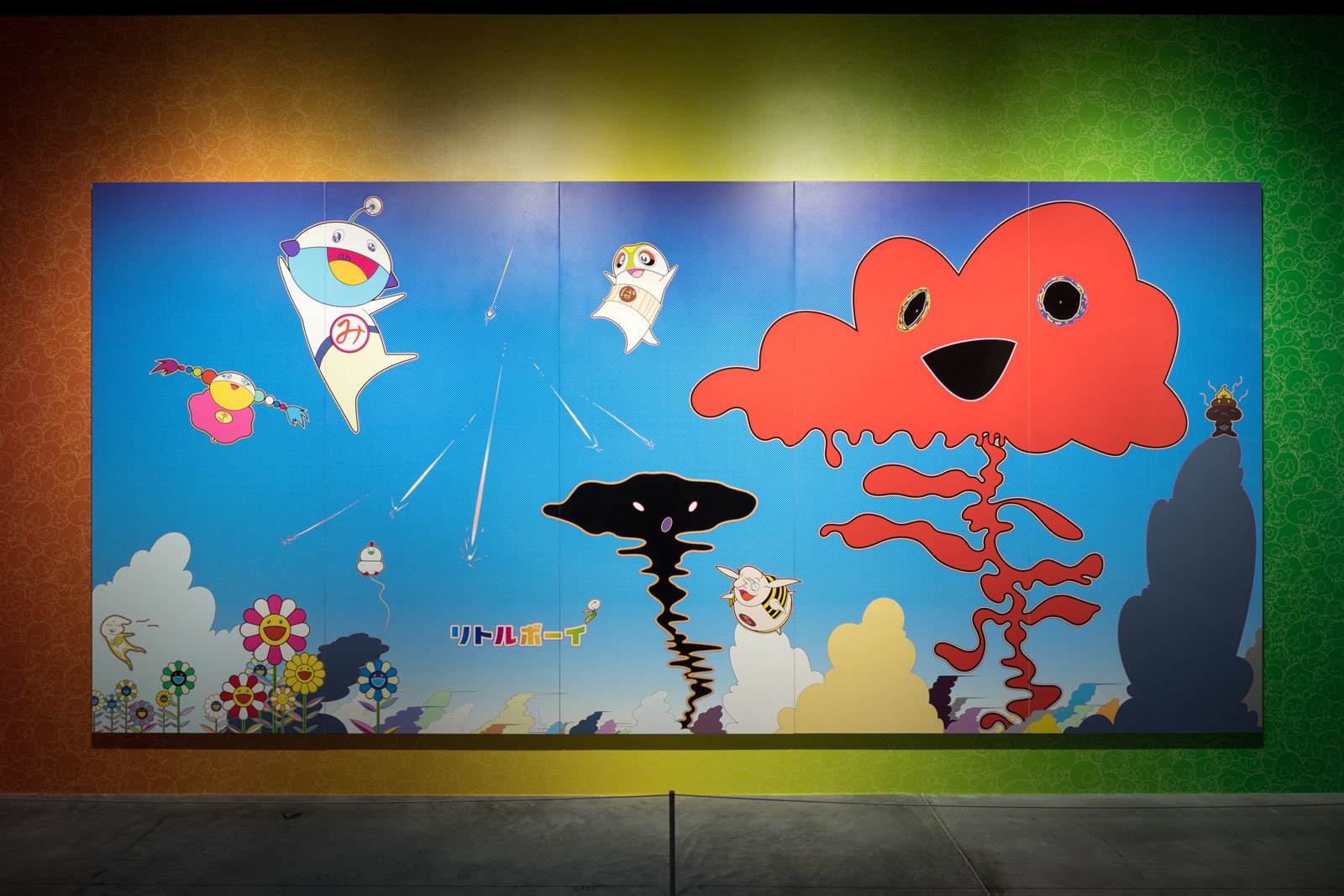
Under the Radiation Falls exhibition view, Moscow, 2017
Photo: Ivan Erofeev
© Garage Museum of Contemporary Art
To summarize, the wounds inflicted by the war are as before being explored by Japanese artists, writers and directors. As was mentioned above, however, it is not entirely appropriate to reduce the thrust of the best-known anime (including those represented at the Garage Museum exhibition) to an anti-militaristic agenda. Something else is far more important. These films are an attempt to present to the viewer the possibility of «happiness for all,» «coexistence with the Other,» which becomes a peculiar liberation from the shock felt by three generations already. By allowing a glimpse of the impossible, anime helps people get through the trauma.
Accepting and deeply experiencing shock is an organic quality of Japanese culture. And today, when the bipolar world of the Cold War has been destroyed and the fear of terrorism intensifies day by day, the ability to survive and reflect upon trauma becomes a key survival skill.
Editor’s Notes
1. A Japanese film and TV series genre dating to the 1950s (generally, about superheroes), with many special effects. The name is an abbreviation of “tokusiu satsuei,” literally, “special filming.” The best-known examples are Godzilla and the Ultraman series.
2.The Japanese economic miracle refers to the period from the mid-1950s to the oil crisis of 1973, years which saw the accelerated development of the Japanese economy.
3. Michel Nostradamus, The Complete Prophecies of Nostradamus (Radford, VA: Wilder Publications, 2009), 139.
4.Literally, “people subjected to the effects of the blast,” a term referring to the surviving victims of the nuclear bombardment of Hiroshima and Nagasaki.
5. The bombing of Tokyo on March 10, 1945 by the USAAF. The fiery conflagration claimed the lives of at least 80,000.
6. Article 9 of the Japanese Constitution ratified on 3 May 1947 states that “. . . land, sea, and air forces, as well as other war potential, will never be maintained. The right of belligerency of the state will not be recognized.”
